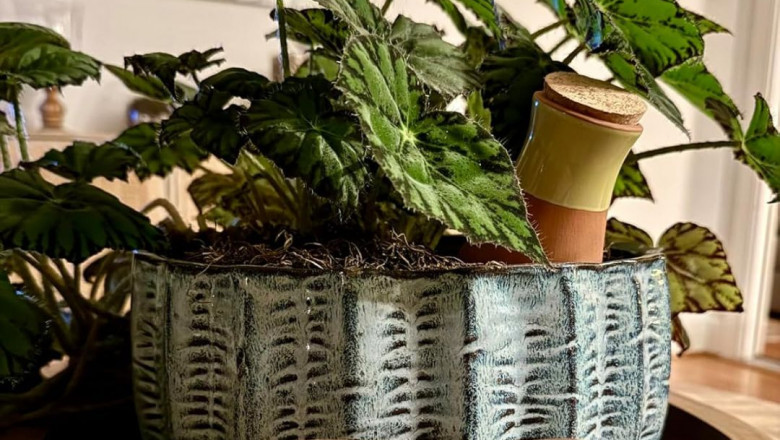views
Are you tired of coming home to wilted plants after a weekend away? Do you struggle with overwatering or underwatering your indoor garden? Self-watering planters offer the perfect solution, providing consistent, automatic hydration for healthier, happier plants.
In this guide, we'll break down:
✔ How self-watering systems actually work
✔ Key benefits for plant health and convenience
✔ Step-by-step operation
✔ Best plants for these systems
✔ Pro tips for maintenance
Plus, we'll answer common questions to help you choose the right system.
How Self-Watering Planters Work: The Science Behind the Magic
Self-watering planters use capillary action—the same natural process that helps trees draw water from their roots to their leaves. Here's the step-by-step process:
1. Water Reservoir Filling
-
A separate compartment at the base holds extra water (typically lasting 1-4 weeks)
-
No electricity needed—works via gravity and absorption
2. Capillary Action in Motion
-
A wicking mechanism (cotton rope, fabric strip, or porous soil) draws water upward
-
Moisture moves through tiny soil channels to reach roots
3. Smart Hydration Delivery
-
Plants absorb only what they need, preventing overwatering
-
Excess water drains away to avoid root rot
4. Visual Water Monitoring
-
Most systems include a water level indicator
-
Lets you know when it's time to refill
Key Benefits of Self-Watering Planters
✅ Prevents over/underwatering – The #1 cause of houseplant death
✅ Saves time & effort – No daily watering needed
✅ Reduces water waste – Uses 30-50% less water than traditional methods
✅ Promotes stronger roots – Consistent moisture = healthier growth
✅ Ideal for vacations – Keeps plants hydrated for weeks
Best Plants for Self-Watering Systems
🌿 Perfect for:
-
Pothos
-
Peace lilies
-
Ferns
-
Herbs (basil, mint, parsley)
-
Tomatoes & peppers (outdoor setups)
🚫 Avoid for:
-
Succulents & cacti (prefer dry soil)
-
Orchids (need specialized care)
Choosing the Right Self-Watering Planter
For Beginners:
-
All-in-one planters with built-in indicators
-
Small to medium sizes (5-10 gallon)
For Advanced Gardeners:
-
Large outdoor systems for vegetables
-
Custom wick adjustments for finicky plants
Pro Tip:
Ensure your planter has an overflow hole to prevent waterlogging!
Maintenance Tips for Long-Term Success
🔹 Use well-draining soil (avoid compact mixes)
🔹 Clean the reservoir monthly to prevent algae
🔹 Check wicks regularly for clogs or wear
🔹 Adjust watering frequency seasonally (plants drink more in summer)
Frequently Asked Questions
1. Can I use regular potting soil?
No—opt for lightweight, aerated mixes to ensure proper wicking.
2. How often do I refill the reservoir?
Typically every 1-4 weeks, depending on plant size and climate.
3. Are these good for outdoor use?
Yes! Many models are weather-resistant—just ensure proper drainage.
4. Do self-watering pots cause root rot?
Not if designed correctly. A good system prevents oversaturation.
Final Verdict: Are Self-Watering Planters Worth It?
✔ For busy plant parents – Eliminates daily watering stress
✔ For frequent travelers – Keeps plants alive for weeks
✔ For gardening newbies – Takes the guesswork out of care
Ready to try one? Explore SmartiLiving’s self-watering collection for hassle-free plant care!














Comments
0 comment